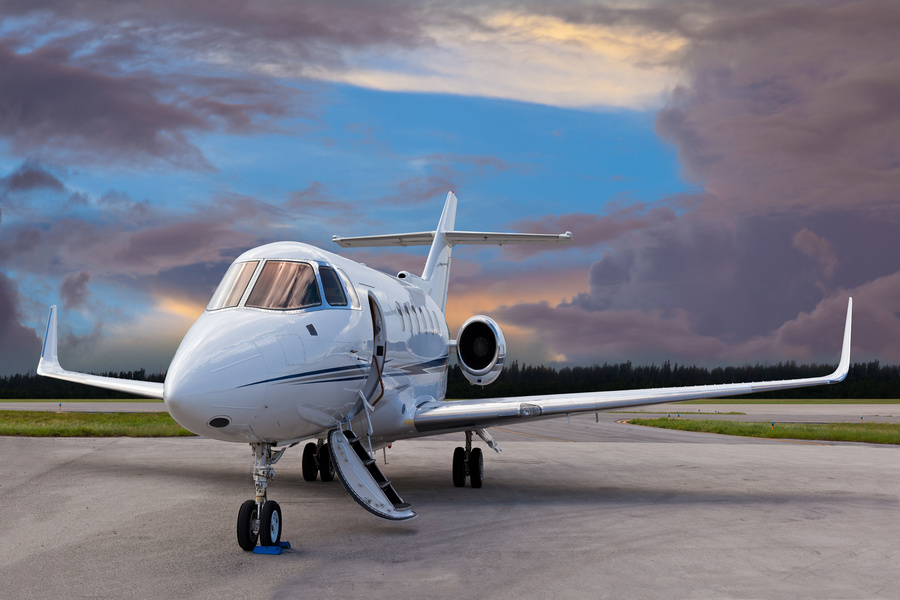What the IRS is Looking for in Corporate Jet Audits

The IRS’ recent declaration of a rigorous enforcement against the utilization of corporate jets has attracted widespread attention, as the Biden administration persists in intensifying its examination of affluent individuals and major corporations with intricate tax arrangements. Zeinat Zughayer, a tax controversy manager at Baker Tilly, provided information on the driving force behind the recent wave of audits and the extent of their coverage.
The IRS recently declared its intention to commence several audits targeting the apportionment of corporate aircraft usage between business and personal purposes by executives, partners, shareholders, and other individuals for tax-related matters. According to the IRS, the level of personal usage has an effect on the eligibility for specific company deductions. “Utilizing the company jet for personal travel usually leads to the individual using the jet for personal purposes being required to report the income, and it may also affect the business’s ability to deduct expenses associated with the personal travel.”
The IRS has acknowledged that this particular section of the Code is intricate, and the agency has had a shortage of enforcement resources until the Inflation Reduction Act (PL 117-169) was passed. This measure aims to ensure that the personal use of business aircraft is not claimed as a tax deduction.
In an interview with Thomson Reuters, Zughayer stated that corporate aircraft utilization has been a significant area of scrutiny for companies undergoing audits. She anticipates that the IRS will prioritize this problem, as it has consistently been a contentious matter. Therefore, it is logical for the IRS to incorporate the region into the broader audit initiative, which focuses on intricate partnerships and millionaires.
“I do feel like there’s been an uptick in purchases of corporate aircrafts since COVID,” Zughayer added. “So maybe they’re also seeing it more frequently.”
Bonus depreciation is a commonly used tax deduction for business jets. The IRS scrutinizes this item rigorously during audits, even if you are using straight-line accounting and subtracting any personal usage from the deduction. “There’s also this other side of imputing income … like reimbursing the company when there is an employee that’s using the aircraft for personal use, whether that be for entertainment purposes or non-entertainment purposes.”
According to Zughayer, §280F regulates the qualification for bonus depreciation for aircraft. This regulation was established to discourage taxpayers from purchasing an aircraft, placing it in a separate limited liability company, and then leasing it back to themselves as part of a rental business. This practice allowed taxpayers to deduct the expenses for personal use of the aircraft. According to §280F, in order to be eligible for bonus depreciation, each flight must satisfy a qualified business use requirement of at least 50.1%. Additionally, 25% of the business use must consist of activities other than just renting the aircraft to oneself or any associated party.
Flights are typically categorized as: business, business entertainment, personal non-entertainment, or personal entertainment. The IRS will specifically focus on deductions claimed for personal non-entertainment trips, such as when an employee attends a funeral or meets with a financial counselor outside of the operational business, according to Zughayer. According to the agency, it is considered a “imbalance” when a corporation attributes revenue to an employee at a rate that is “considerably lower than the fair market value of that flight.” Even if only $1,500 is considered as the value of a $20,000 flight, the corporation can still claim a deduction of $20,000.
Zughayer expressed curiosity about the “new methods” that the IRS will employ to counteract this, given that the rules are formulated in a manner that inherently supports the taxpayer’s interests.
Allocations of mixed-use flights can be highly subjective, she stated, emphasizing the need for precision. To ascertain the primary purpose of a flight, she begins by asking clients a simple question. For example, if an employee travels to Las Vegas for a conference but also takes their spouse to remain in the city for the weekend after the work event, the main objective would still be considered a business trip. In that situation, income would be assigned for the purpose of providing the spouse with the opportunity to travel with the employee. In contrast, for flights categorized as entertainment, expenses are distributed based on the number of passengers.
Zughayer noted that the distinction is important since attributing $1,500 to an employee for having their spouse on the aircraft is very different from allocating $10,000 to each passenger and potentially disallowing $10,000 worth of deductions.
She cautioned that the process of maintaining records and providing evidence for claims presents its own set of difficulties. If the taxpayer who participated in the Las Vegas conference undergoes an audit, a comprehensive record of flights may not be sufficient. In a particular instance, Zughayer encountered an IRS agent who requested a conference booklet as corroborating evidence to substantiate the purpose of the flight.
“Typically, these exams are not conducted in the year following the filing of the return,” Zughayer stated. “Taxpayers may be required to search through their email archives from two to three years ago in order to find evidence supporting a flight they took during that time period.” Therefore, this is the point at which documentation can present difficulties, and our approach is to establish and implement optimal methods right from the start.
(This is Blog Post #1560)


